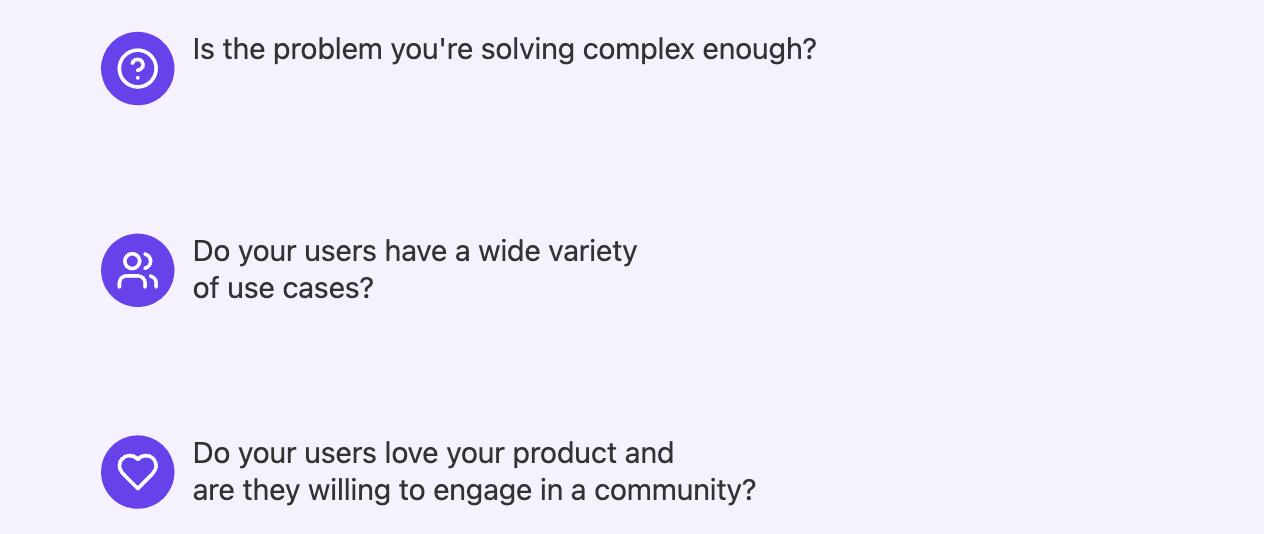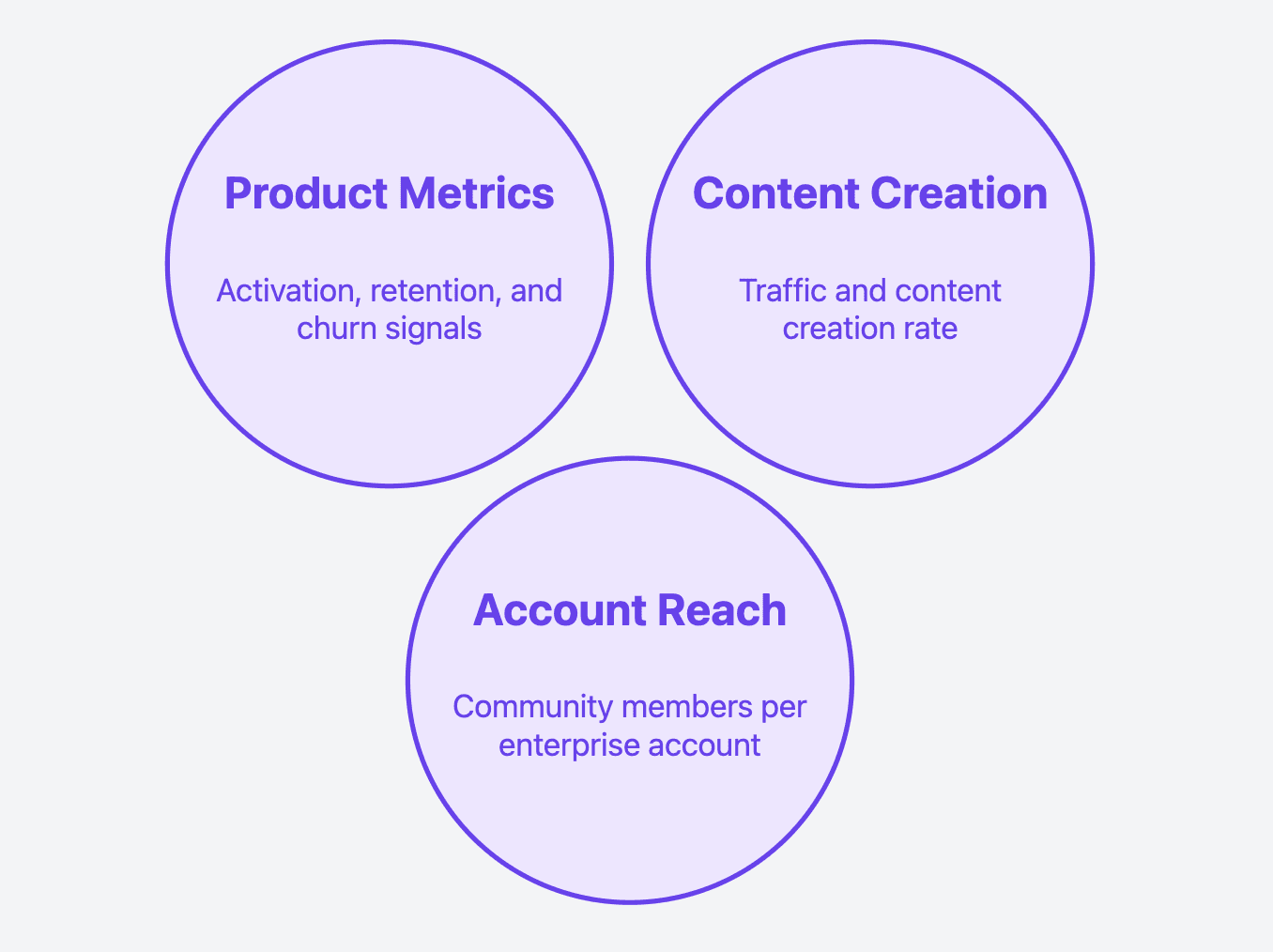
Building and Managing a SaaS Community: Step-by-Step Guide

par
Aleksa Mitrovic
23 sept. 2024
Identifiez et convertissez vos utilisateurs les plus importants
Créer un compte
Building and managing a successful community around a SaaS product can be a powerful strategy for enhancing user engagement, retention, and overall product adoption. Esther Trapadoux, the Head of Community at Amplitude, shared valuable insights into how they transformed their community from a support-focused group to a thriving community of practice. Here’s a step-by-step guide based on her experiences and advice.

1. Understand Your Users and Product
Before diving into community building, it's crucial to understand your users and the problem your product solves. Esther emphasized the importance of knowing whether your product is complex enough to warrant a community of practice and whether your users are passionate and engaged enough to participate actively.
Key Questions to Ask:

2. Define the Purpose of Your Community
Determine what value your community will bring to your users. Amplitude initially struggled with defining their community's purpose but found success when they focused on helping users get more out of their product.
Strategic Value:
Retention: A well-defined community can significantly enhance user retention.
Activation and Adoption: By providing a space for users to share use cases and best practices, you can drive deeper product adoption.
3. Choose the Right Tools
Selecting the right tools is essential for managing and growing your community. Amplitude uses a combination of Slack, Gainsight, and Common Room to facilitate communication, content discovery, and data management.
Tools Used by Amplitude:
Slack: For easy conversations and relationship building.
Gainsight Community Platform: For content discoverability and one-to-many communication.
Common Room: For data storage and identity resolution.
4. Create a Flywheel Effect
Build a community that serves users throughout their career, not just at the beginning. Amplitude focuses on creating a self-sustaining flywheel where users continually find value and engage with the community.
Successful Initiatives:
Office Hours: Biweekly sessions where users can get immediate help and see experts in action.
Highway Amplitude Series: A biweekly use case sharing series where members present specific use cases and live builds.
5. Foster Vulnerability and Deep Sharing
In-person events can create deeper connections and vulnerability, which are harder to manufacture online. Esther emphasized the importance of consistency and predictability in organizing in-person meetups.
Key Heuristics for In-Person Events:
Vulnerability: Easier to achieve in person than online.
Deep Sharing: In-person interactions allow for more meaningful connections.
Predictability: Ensure users know when and where to expect events.
6. Measure Success with KPIs
Establish key performance indicators (KPIs) to measure the success of your community initiatives. Amplitude focuses on both quantitative and qualitative metrics.
KPIs Used by Amplitude:

Account Reach: Number of community members per enterprise account.
Product Metrics: Key signals of strong activation, retention, and churn.
Content Creation: Traffic on community.amplitude.com and overall content creation rate.
7. Engage Users in Content Creation
Encourage user-generated content by creating spaces and programs that make it safe and easy for users to share their experiences and best practices.
Content Creation Strategies:
Highway Amplitude Series: Biweekly use case sharing sessions.
Office Hours: Focused on live builds and practical application.
Slack Community: Organized to foster a sense of belonging and relevance.
8. Continuously Improve and Adapt
Community building is an ongoing process. Regularly gather feedback from your users and adapt your strategies based on their needs and preferences.
Feedback Loop:
New Member Welcome Calls: One-on-one calls with every new member to understand their problems and needs.
Iterative Improvement: Continuously refine your community programs based on user feedback.
Conclusion
Building a successful community around a SaaS product requires a deep understanding of your users, a clear purpose, the right tools, and a commitment to continuous improvement.
By fostering vulnerability, deep sharing, and user-generated content, you can create a thriving community that drives user engagement, retention, and product adoption.
Esther’s insights provide a valuable roadmap for any SaaS company looking to build and manage a successful community. By focusing on the strategic value of the community and measuring success with relevant KPIs, you can create a community that truly serves your users and enhances your product’s value.




